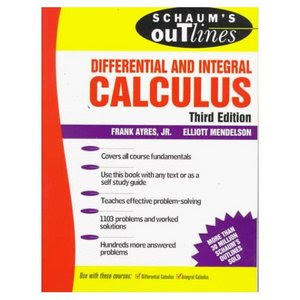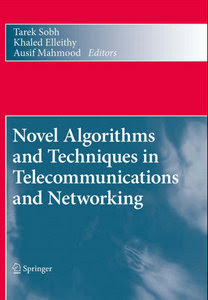 Hari Kishan, "Trigonometry"Atlantic Publishers & Distributors (P) Ltd | 2005 | ISBN: 8126905719 | 252 pages |
Hari Kishan, "Trigonometry"Atlantic Publishers & Distributors (P) Ltd | 2005 | ISBN: 8126905719 | 252 pages |
PDF | 6,4 MBPrimarily designed as a textbook, Trigonometry is a unique treatise on vectors, aiming at providing a fairly complete account of the basic concepts required to build a strong foundation for a student endeavouring to study this subject. The analytical approach to the major theories — Inverse Circular Functions, De-Moivre’s Theorem, Hyperbolic Functions, Gregory’s Series, Trigonometrical Expansions and many more — makes the book highly self-contained and comprehensive guide that succeeds in making the concepts easily understandable.
 Schaum's Outline of Theory and Problems of Differential and Integral CalculusPublisher: Mcgraw-Hill | pages: 484 | 1990 | ISBN: 0070026629 | PDF | 13,7 mb
Schaum's Outline of Theory and Problems of Differential and Integral CalculusPublisher: Mcgraw-Hill | pages: 484 | 1990 | ISBN: 0070026629 | PDF | 13,7 mbA revised, updated edition of this classic Schaum's Outline which has sold approximately 1,100,000 copies since 1968. The book is completely modernized both in terms of mathematical content and language. Lists of formulas for derivatives and integrals have definitions and explanations added for easier understanding and some material on analytic geometry has been added. There are over 1,000 solved problems and hundreds of supplementary problems.
 Applied Linear Algebra and Matrix AnalysisPublisher: Springer | pages: 388 | 2006 | ISBN: 0387331948 | PDF | 10,3 mb
Applied Linear Algebra and Matrix AnalysisPublisher: Springer | pages: 388 | 2006 | ISBN: 0387331948 | PDF | 10,3 mbThis new book offers a fresh approach to matrix and linear algebra by providing a balanced blend of applications, theory, and computation, while highlighting their interdependence. Intended for a one-semester course, Applied Linear Algebra and Matrix Analysis places special emphasis on linear algebra as an experimental science, with numerous examples, computer exercises, and projects. While the flavor is heavily computational and experimental, the text is independent of specific hardware or software platforms.
 Oxford Handbook of the History of Mathematics (Oxford Handbooks)
Oxford Handbook of the History of Mathematics (Oxford Handbooks)Oxford University Press, USA | 2009-02-18 | ISBN: 0199213127 |
800 pages | PDF | 11 MB
This Handbook explores the history of mathematics under a series of themes which raise new questions about what mathematics has been and what it has meant to practice it. It addresses questions of who creates mathematics, who uses it, and how. A broader understanding of mathematical practitioners naturally leads to a new appreciation of what counts as a historical source. Material and oral evidence is drawn upon as well as an unusual array of textual sources.
 Hari Kishan, "Trigonometry"
Hari Kishan, "Trigonometry" RSS Feed
RSS Feed  Twitter
Twitter 


